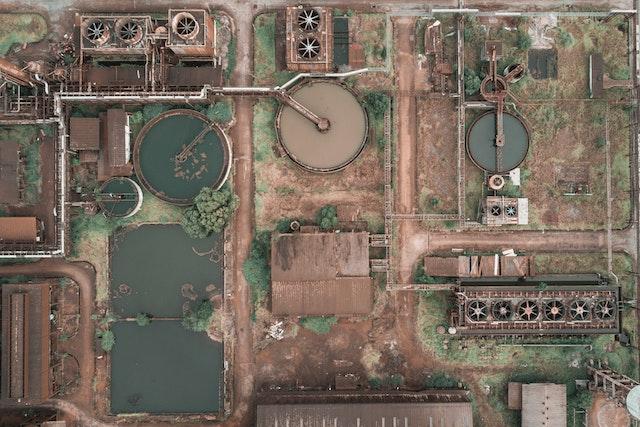PLC's and Water Treatment Facilities
It wasn’t that long ago that treating wastewater and delivering clean, safe drinking water to homes relied on manual processes. Today, water treatment is largely automated, thanks in no small part to the use of Programmable Logic Controllers (PLCs) and other electrical devices that can be programmed to complete many of the tasks required with little to no human oversight.
As the demand for reliably clean drinking water continues to grow, water and wastewater treatment facilities will need to increase their reliance on technologies that make automation possible. In this article, we’ll examine the current challenges facing modern water and wastewater facilities, and why PLCs are used more and more to control operations.
Challenges Facing Modern Water Treatment Facilities

There is more to urban water management than ensuring an adequate supply is available. Modern water treatment facilities face a number of complex challenges that most people seldom concern themselves with, not least of them being mitigating bacterial propagation and performing preventative maintenance. This section will explore how the use of PLCs helps to remediate those challenges.
- Bacterial Control – While PLCs themselves cannot regulate the severity of micro-organism propagation or the organic compounds they feed upon; PLC programming can control the equipment that keeps bacterial levels in check. This includes the automatic adjustment of temperature and flow rates to create conditions detrimental to organic growth. Not only that, the PLC is able to process input data collected from sensors located throughout the facility and adjust other processes such as oxidization and agitation of untreated water to maximize the decomposition of harmful components present in the water.
- System Monitoring and Maintenance Activities – With the health and safety of the population hanging in the balance, a water treatment facility, like many other industrial settings, can ill-afford a crucial piece of equipment to succumb to sudden failure. Digital monitoring of things like pre-filtration cartridges and bags can notify personnel when scaling or fouling of membranes may impede supply or reduce the longevity of components. When systems are highly monitored through the use of field mounted sensors paired with a PLC that is able to collect and parse the data, not only will the product be of a more consistent quality, the overhead costs required to operate the facility will also diminish. This nice thing about PLCs is how easily they can be integrated with a Supervisory Control and Data Acquisition (SCADA) system. SCADA’s provide users with a visual representation of the data that is collected in real time, meaning operators can access the conditions of equipment on the plant floor in real time.
Components of PLCs
To clarify, the PLC, nor its use in industrial applications, is nothing new. In fact, PLCs have been around for decades. Even with all the technological advancements we’ve seen over the years, they nonetheless represent a more than viable option to control operations in a facility responsible for maintaining a municipality’s water supply. Here are a few of the components that make PLCs such a reliable component in system automation.
- Control Unit – The processor or control unit resides at the heart of the PLC. It contains the microprocessor that makes converting input signals into output controls possible. In a water treatment facility, that could mean anything from taking the data collected by a water meter and executing a command to increase water flow to executing a command to activate the aerator.
- Programming Device – Allows the code to be entered into the memory processor of the PLC.
- Memory Unit – This is where the code itself is stored within the PLC.
- I/O – The input and output (I/O) connections receive external signals from the field devices and communicate the appropriate commands that should be executed in response.
Why PLCs are Used with Greater Frequency in Water Treatment Plants
There are a number of reasons why PLCs are being used in water treatment facilities with greater frequency. While these will generally include the obvious answers like improved efficiency of operations and a reduction in human error, there are more substantive reasons why you’ll find a PLC driving many of the processes required to deliver clean drinking water.
First, PLCs are a tried-and-true technology with a proven track record for controlling systems of wildly varying levels of complexity. The operations that they control are relatively easy to scale, and they can be re-programmed or repurposed to meet other needs as they arise. Where once programming a PLC was a very difficult endeavor, modern coding languages and troubleshooting aids have simplified the programming process. Comparatively speaking, retrofitting a treatment facility is a cost-effective way to modernize operations in a water treatment facility. Since these facilities are public works funded by the local government, a balance between safety, efficiency, and cost savings cannot be understated. While there are undoubtedly more advanced technologies that can be leveraged, their cost to implement and maintain may be prohibitive.
Clean, Reliable Water Courtesy of PLCs
Hard to believe that something as important as water quality used to be maintained through manual processes and operations. Fortunately, thanks to technology, there is no reason to worry that the growing demand for clean drinking water will mean that water and wastewater treatment facilities will not be able to maintain an adequate supply. Automated or not, these facilities cannot operate without engaging those who understand how the various components and systems work together. PLC technicians in particular, will always be needed to ensure the controllers are programmed and installed optimally. If you’d like a rewarding career helping to ensure the continued safety of your region’s water supply, consider enrolling in George Brown College’s PLC technician program.
